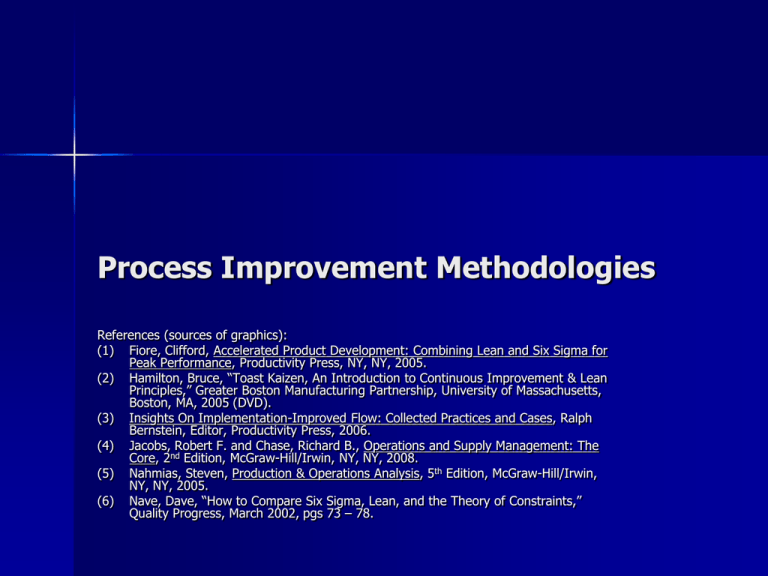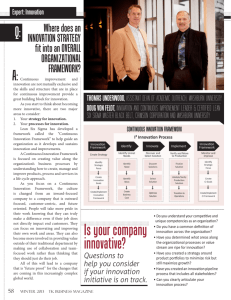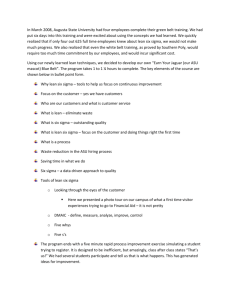Introduction to the Engineering Design Process
advertisement

Process Improvement Methodologies References (sources of graphics): (1) Fiore, Clifford, Accelerated Product Development: Combining Lean and Six Sigma for Peak Performance, Productivity Press, NY, NY, 2005. (2) Hamilton, Bruce, “Toast Kaizen, An Introduction to Continuous Improvement & Lean Principles,” Greater Boston Manufacturing Partnership, University of Massachusetts, Boston, MA, 2005 (DVD). (3) Insights On Implementation-Improved Flow: Collected Practices and Cases, Ralph Bernstein, Editor, Productivity Press, 2006. (4) Jacobs, Robert F. and Chase, Richard B., Operations and Supply Management: The Core, 2nd Edition, McGraw-Hill/Irwin, NY, NY, 2008. (5) Nahmias, Steven, Production & Operations Analysis, 5th Edition, McGraw-Hill/Irwin, NY, NY, 2005. (6) Nave, Dave, “How to Compare Six Sigma, Lean, and the Theory of Constraints,” Quality Progress, March 2002, pgs 73 – 78. Comparison of Three Commonly Adopted Improvement Methodologies See reference, How To Compare Six Sigma, Lean and the Theory of Constraints Comparing the main points of the three improvement methodologies: Six Sigma, Lean Thinking, and Theory of Constraints Six Sigma Approach Define, measure, analyze, improve, control (DMAIC) cycle Six Sigma Tools Tools common to other quality programs are used in Six Sigma Failure mode and effects analysis (FMEA) – Structured approach to identify, estimate, prioritize, and evaluate risk of possible failure at each stage of a process – Risk priority number (RPN) is calculated and is based on Extent of damage resulting from failure (severity) Probability failure takes place (occurrence) Probability of detecting the failure (detection) – High RPN items are designated for improvement first – Example Design of experiments (DOE) – Statistical approach used for determining the cause-and-effect relationship between process variables and an output variable – Approach allows for experimentation with many variables simultaneously Six Sigma Quality To achieve a Six Sigma quality (according to the assumptions used by Motorola and GE) a process must produce no more than 3.4 defects per million opportunities Assuming a process follows a normal distribution and given design limits of ± 6 σ there would be 2 defective parts per billion (0.000000002 fraction defective) Motorola’s and GE’s value of 3.4 defects per million is due to the fact that a shift of 1.5 σ in the process mean is assumed An example process – spec = 1.250 ± 0.005, μ = 1.250, σ = 0.002, UCL & LCL = 3 σ (μ and σ estimated from sample parameters) – Six Sigma process: μ = 1.250 in, σ = 0.000833 in (0.005 in/6) – Six Sigma process with a 1.5 σ shift to the mean: μ = 1.25125 in, σ = 0.000833 in Process Capability Index Process capability index (Cpk) LSL USL C pk min or 3 3 , estimated from sample parameters For (Motorola’s and GE’s) Six Sigma process 4.5 7.5 C pk min or min 2.5 or 1.5 1.5 3 3 Example Problem Lean Case Study Quality Parts Company






